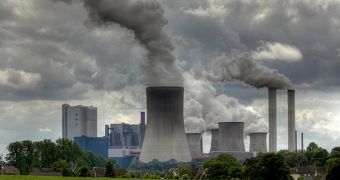It'll probably be a while until human society is powered by green energy sources alone. Until that day comes, researchers propose that we improve on the ecological footprint of power stations by fitting their smokestacks with so-called artificial lungs.
The “lungs” scientists urge be installed inside power station smokestacks are basically highly efficient filtering systems that would serve to capture the carbon dioxide released by such facilities before it gets the chance to reach the atmosphere.
These highly effective filtering systems owe their name, i.e. “artificial lungs,” to the fact that their structure resembles that of a bird's lung or a fish's swim bladder.
As EurekAlert explains, they would comprise “arrays of tubes made from porous membranes fitted side-by-side, much like blood vessels in a natural lung.”
Some of these tubes would serve to trap carbon dioxide, and the remainder would absorb several other waste emissions.
“The goal is to cram as much surface area into the smallest space possible,” says Aaron P. Esser-Kahn, one of the researchers now working on developing a prototype of one such artificial lung.
Scientists have thus far managed to piece together several miniature “artificial lungs.” They are now working on making them more effective in absorbing emissions, and hope it will not be long until they figure out a way to build bigger ones.
“What we have is the first step in a longer process,” researcher Aaron P. Esser-Kahn stresses.

 14 DAY TRIAL //
14 DAY TRIAL //